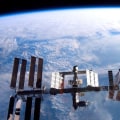The 1967 Outer Space Treaty prohibits the placement of weapons of mass destruction (WMD) in outer space, prohibits military activities in celestial bodies, and details legally binding rules governing the peaceful exploration and use of space. For example, some have interpreted “peaceful” to suggest the “non-military use” of space, while others suggest that it means “non-aggressive behavior”. These treaties are considered to have set a precedent for future international agreements in terms of promoting scientific knowledge on a peaceful and selfless basis. Ambassador Christina Rocca addressed the issue on February 15 at the Conference on Disarmament, claiming that the action would be consistent with the Outer Space Treaty, as the United States had previously notified foreign governments for the sake of transparency and was carrying out the operation to prevent possible loss of life.
OST was at the heart of a “network” of interstate treaties and strategic negotiations on power to achieve the best available conditions for global nuclear weapons security. The subcommittee submitted a final report and the Working Group on the Use of Nuclear Power Sources in Outer Space also submitted a report. In 1958 and 1959, two international committees, the Committee on Space Research (COSPAR) and the United Nations Committee on the Peaceful Uses of Outer Space (COPUOS), were established to promote international cooperation in scientific research and promote the peaceful use of outer space. From 7 to 16 June, the sixtieth session of the Committee on the Peaceful Uses of Outer Space was held in Vienna from 7 to 16 June.
It has become an important aspect of all planetary missions undertaken by NASA and other space agencies. All countries must consider what kind of future space is desirable, what behavior is counterproductive and, consequently, what rules should be pursued in their own enlightened interest. The Chinese ambassador mentioned that the weaponization of space was not “in any way a remote issue; instead, the “danger” was imminent and the most urgent issue. It also urged States active in outer space to keep the Conference on Disarmament informed of any progress in bilateral or multilateral negotiations on the issue.
The Treaty added new provisions to the basis provided by the Declaration of Legal Principles Governing the Activities of States in the Exploration and Use of Outer Space, adopted by the General Assembly in 1963 in its resolution 1962 (XVIII). The Treaty provides that all stations, facilities, equipment and spacecraft on the Moon and other celestial bodies shall be open to representatives of other States Parties on a reciprocal basis; such representatives shall give reasonable advance notice of their planned visit, so that they may be held consultations and maximum precautions can be taken to ensure safety and avoid interference with the normal operation of the facility to be visited. At the moment, there is no regulatory framework that would allow the United States government to oversee these specialized space missions and ensure that companies adhere to the articles of the Outer Space Treaty. After successfully reaching consensus on the Antarctic Treaty in 1959, countries were eager to apply these already agreed terms to outer space.
Nations are responsible for their activities in space, are responsible for any damage caused by objects thrown into space from their territory, and are intended to help astronauts in distress. .



